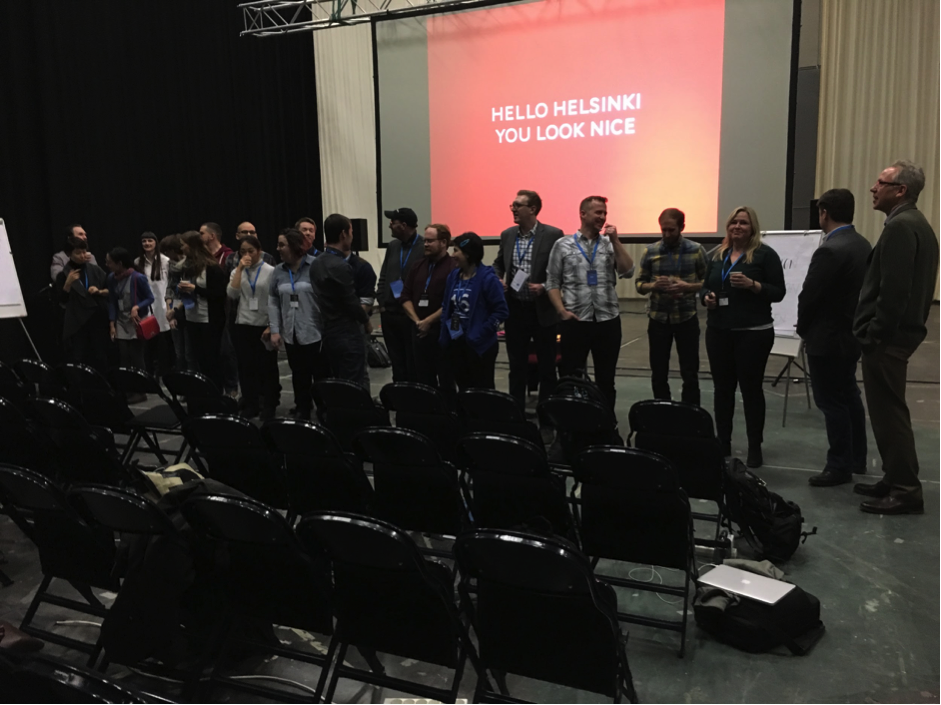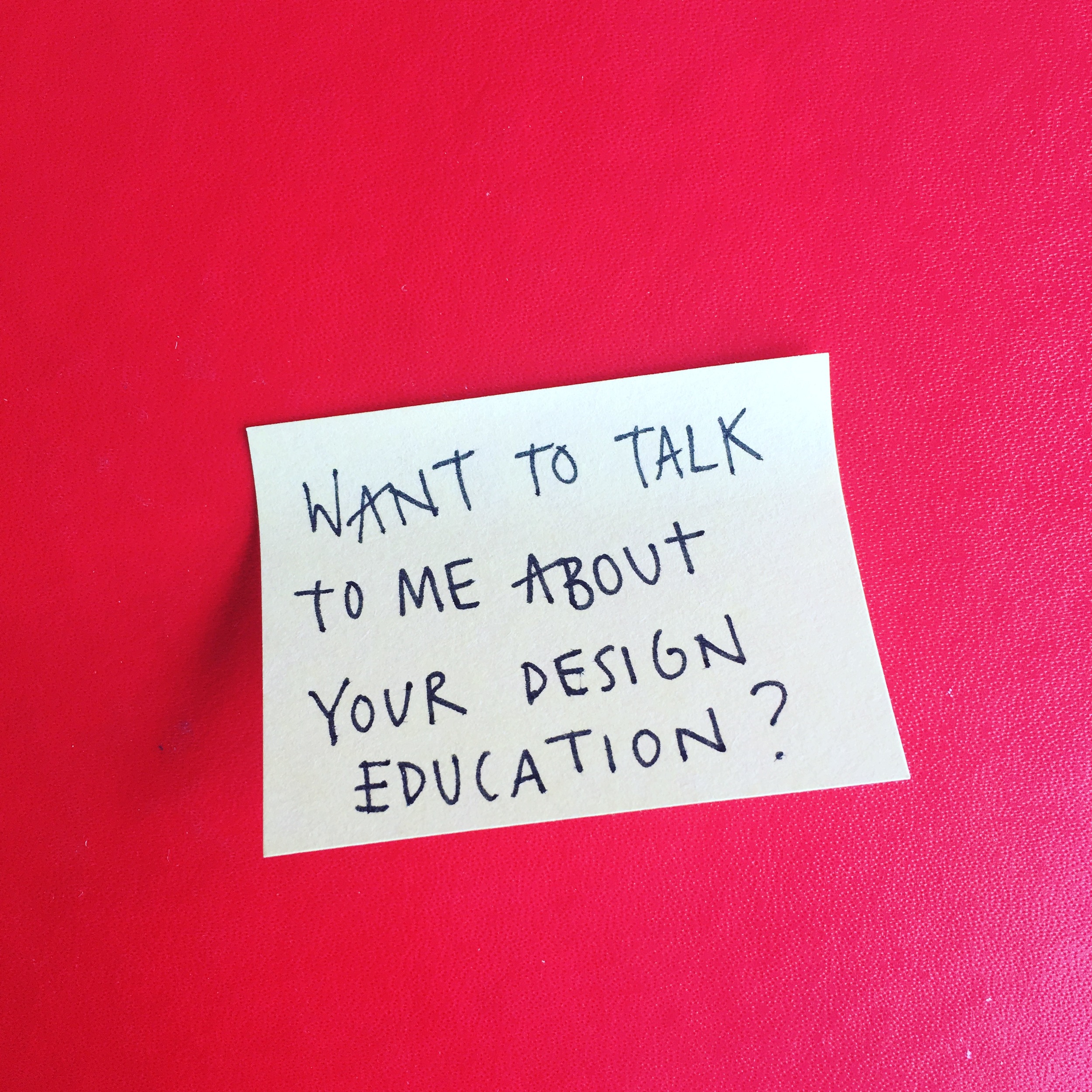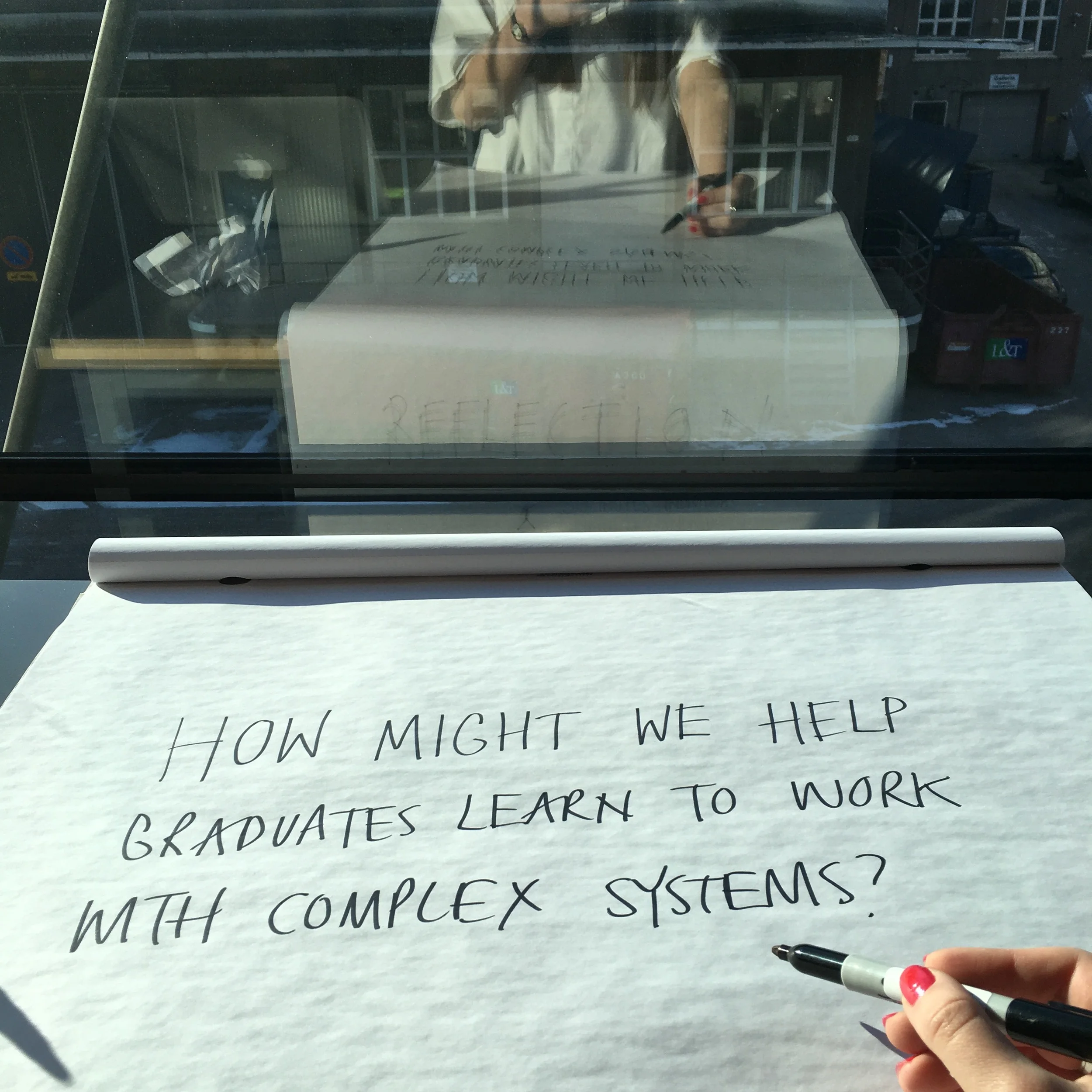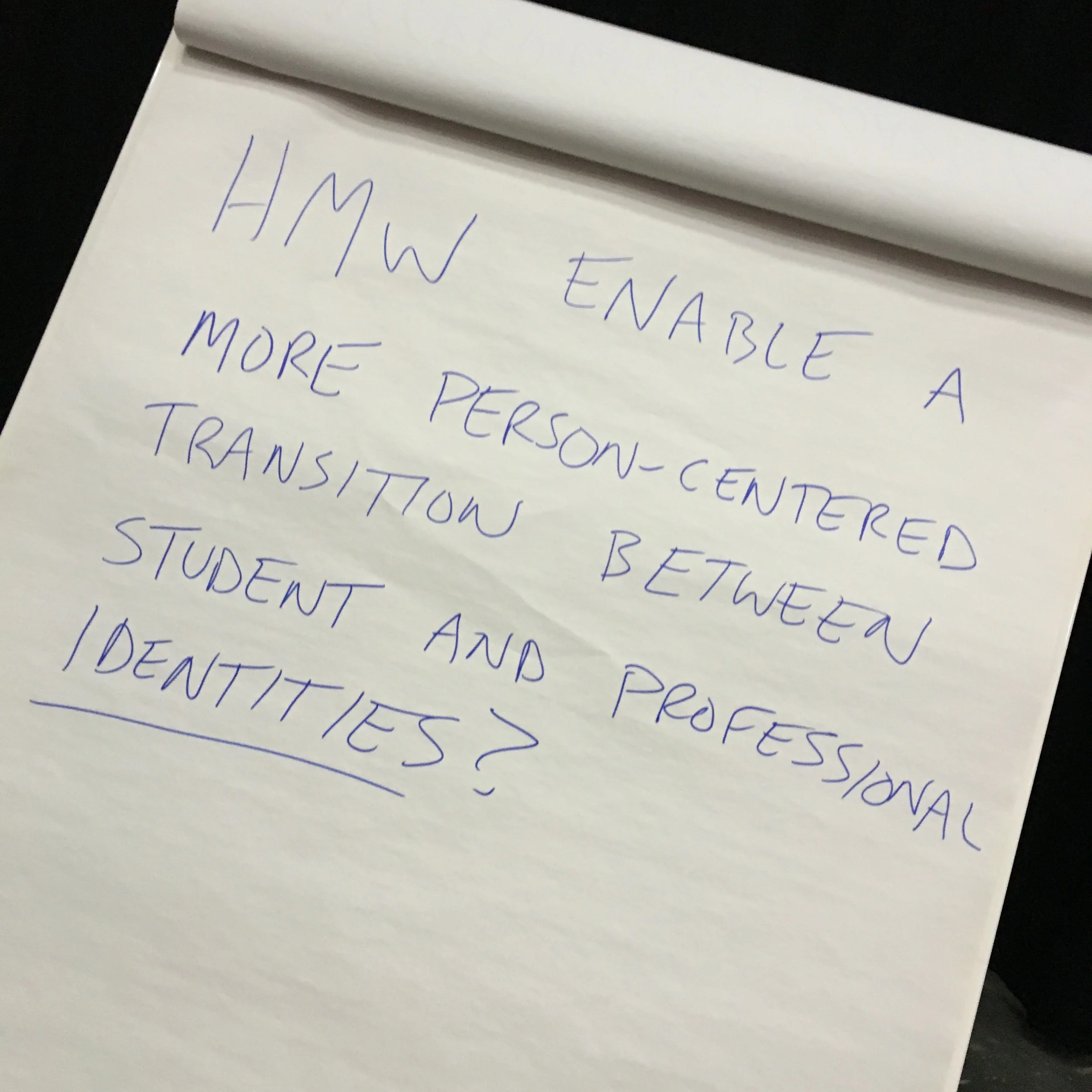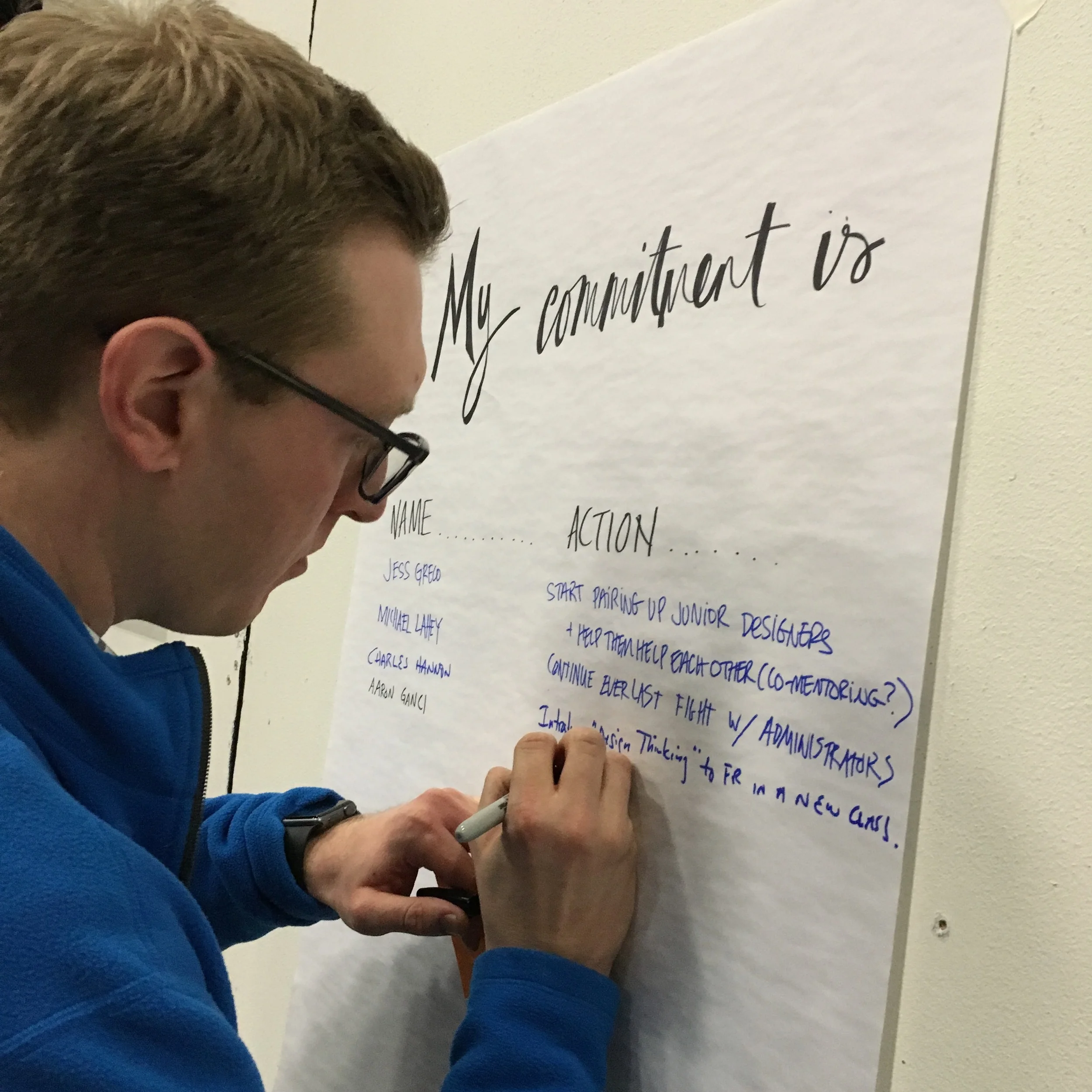IXDA Design Education Summit
The Interaction Design Education Summit met for its fourth year this year, this time in collaboration with Interaction 16’s education partner Aalto University. Each year, the Summit brings together design educators from research academia, design & art schools, vocational programs, corporate/industry training, and lower-ed (K-12) as well as industry practitioners to talk about how all of us can better fulfil IxDA’s mission of advancing the practice of interaction design. I was thrilled when Daniel Harvey and I were invited to run a workshop on our proposed topic of designing designers.
Daniel leads up the new talent programme at Sapient Nitro. I've spent time as a student, an employer and an educator so together we feel really strongly about this challenge from various angles. We're keen to celebrate the brilliant work that is happening whilst being a bridge between learning and practising, helping to prototype new ways of doing things.
We kicked off our three hour session by inviting the participants to organise themselves on a scale of agreement in response to two statements; design education is broken and 'design education should be better understood. We chose these statements in the hope they would be provocative but still open to interpretation. We invited each participants to introduce themselves and share why they were standing where they were.
We then played a video to the room. I crowd sourced this video prior to the conference by putting a call out online. Daniel and I wanted to do this to bring a wider range of voices and perspectives into the room and hopefully keep the conversation going online. Most importantly, I wanted the conversation to be led by students.
Huge thank you to my friends and others who took the time out to share their story with us. We heard from Chris Arnold an educator from Alabama, Mathias Jakobsen a practitioner from New York City, Boon Yew Chew a practitioner from London,
Jonathan Kalinowski a practitioner from Chicago, Charlotte Dewar a practitioner from Sussex, Jia Liang Wong a Hyper Island Alumni from Singapore, Natalie Foo a Hyper Island Alumni from London, Joe MacLeod a practitioner from London, Alfonso Gugino a practitioner from London, Emma Nordung a Hyper Island Alumni from Stockholm, Hassan Habib a Hyper Island Alumni from Pakistan and
Kara Western a Hyper Island Alumni from Boston.
“A human being should be able to change a diaper, plan an invasion, butcher a hog, conn a ship, design a building, write a sonnet, balance accounts, build a wall, set a bone, comfort the dying, take orders, give orders, cooperate, act alone, solve equations, analyze a new problem, pitch manure, program a computer, cook a tasty meal, fight efficiently, die gallantly. Specialization is for insects. ”
We asked each team to take some time after the video to reflect and answer these three questions:
- What have I heard today that has affected me the most?
- What is my design story?
- What do I want to happen next?
“My problem isn’t a design problem it’s a people problem”
We used these reflections to push us towards themes or ideas and raise questions:
- What would an accreditation board look like?
- We need better collaboration in the ‘hand off’ process between industry and educators
- How can we test and measure critical thinking?
- Should all this start earlier? What would it look like in pre-school?
- Who are young designers aspiring to be like?
- What should our relationship with business be? Do we work in the system to try and change from the inside or do we create new systems like Hyper Island, Kaos Pilots and General Assembly?
- Should designers have to have a license to design?
- How do we all go about agreeing on the fundamentals of the foundation of a design degree?
- How can we help industry understand better what design grads are good at?
- The holistic nature of this work makes it confusing
- Educators want more clarity from companies on what they need
- Our sister industry of architecture seems to have handled all this much better
- Design needs to be taught to everyone
We then split up into teams and crafted a how might we statement to focus our thinking for the rest of the session:
1. How might we help the industry better utilise and understand the skills of graduates?
2. How might we create the foundation for all interaction design courses?
3. How might we enable a more person centered transition from student to professional identities?
4. How might we create the best design school in the world?
5. How might we create better structures for collaboration between academia and industry?
“I don’t care about design, I care about helping students be intellectually engaged with the world”
Petr and his team tackled designing the world's best independent design school.
“Our design school would take multiple years to finish (think 6). First few years would be spent in a design studio traveling the world to places that needed designers”
One team facilitated everyone in the room sharing their ideas about soft and hard skills a designer would need.
We ended the session with a commitment to action. This is a big conversation and a very short amount of time. It's often easier to talk than it is to do so I encourage each of you to take an action too and share it with me. As you can see from the actions below there is no right or wrong - it's about taking small steps to make a big change. Read Petr's personal account of the session here.
- Adam S: Give more presentations about design education
- Adam M: Implement that survey
- Peter: Revisit the curriculum and structure it to include these great ideas.
- Shi: Continue to ask others for their definition of a designer
- Alex: Curricular adjustments for more hard skills
- Matti: Publish something
- Jane: Help the edusummitt conference come to South America
- Aaron: Bring what I learned from the professionals here back to my faculty and write something about this issue publicly
- Charles: Introduce design thinking to the freshmen in my new class
- Michael: Continue everlasting fight with administrators
- Jess: Start pairing up junior designers and help them help each other
- Heidi: Organise event to start discussion between stakeholders
- Dan: Reach out to local university to mentor on soft skills and design critiques
We ended the session with a check out. Checking out is a favourite tool of Hyper Island's to allow each group member to reflect or express a feeling. The range of sentiments nicely suggested the non-judgmental tone of the whole workshop which everyone found refreshing. Some left feeling optimistic, others left feeling a deeper understanding of the complexity of the problem, while others doubled-down on their commitments to action.
My personal reflection was a reminder that short workshops can be tricky. Time is precious and often one of the most valuable things in a conference context is simply having time to talk to people you wouldn't normally talk to. Next time I will remember this and be sure to dedicate space to conversation. I was also reminded that the role of a designer as a sole (and more often than not male - think Philippe Stark, Mark Zuckerberg and Steve Jobs) hero who creates an ingenious multi-million dollar idea in his bedroom is the type of designer many educators and practitioners think education should be promoting and producing. This scares me and is the opposite of the type of designer a) I strive to be b) the world needs. This article articulates it better than I can...
“We can build software to eat the world, or software to feed it. And if we are going to feed it, it will require a different approach to design, one which optimizes for a different type of growth, and one that draws upon – and rewards – the humility of the designers who participate within it.”
Thanks for having us IXDA and thank you to everyone who came along to the session. Hat tip to Jonathan Baldwin who has been teaching me since I was 18 and continues to challenge, inform and inspire how I think about design education (and apostrophes).
